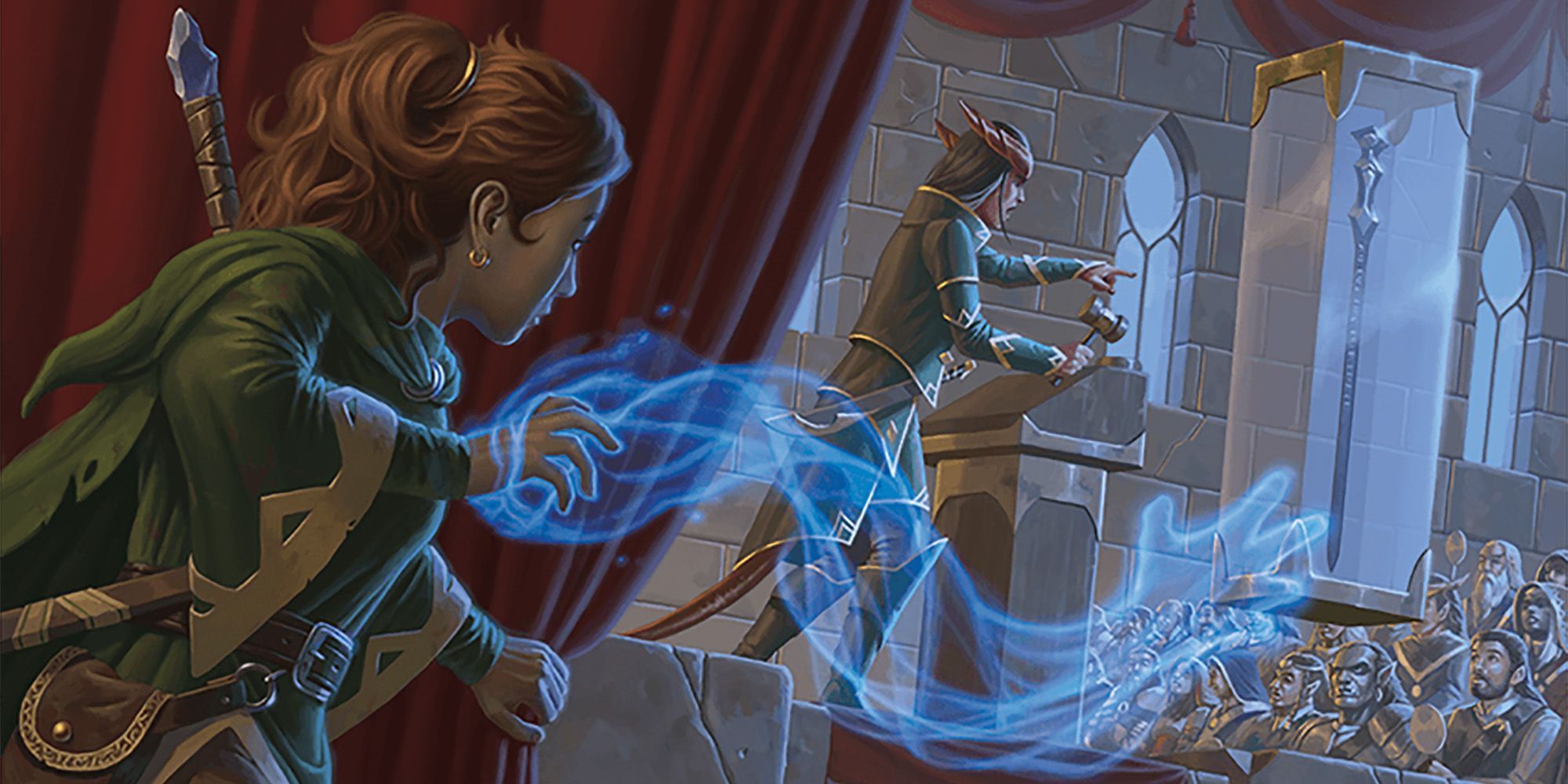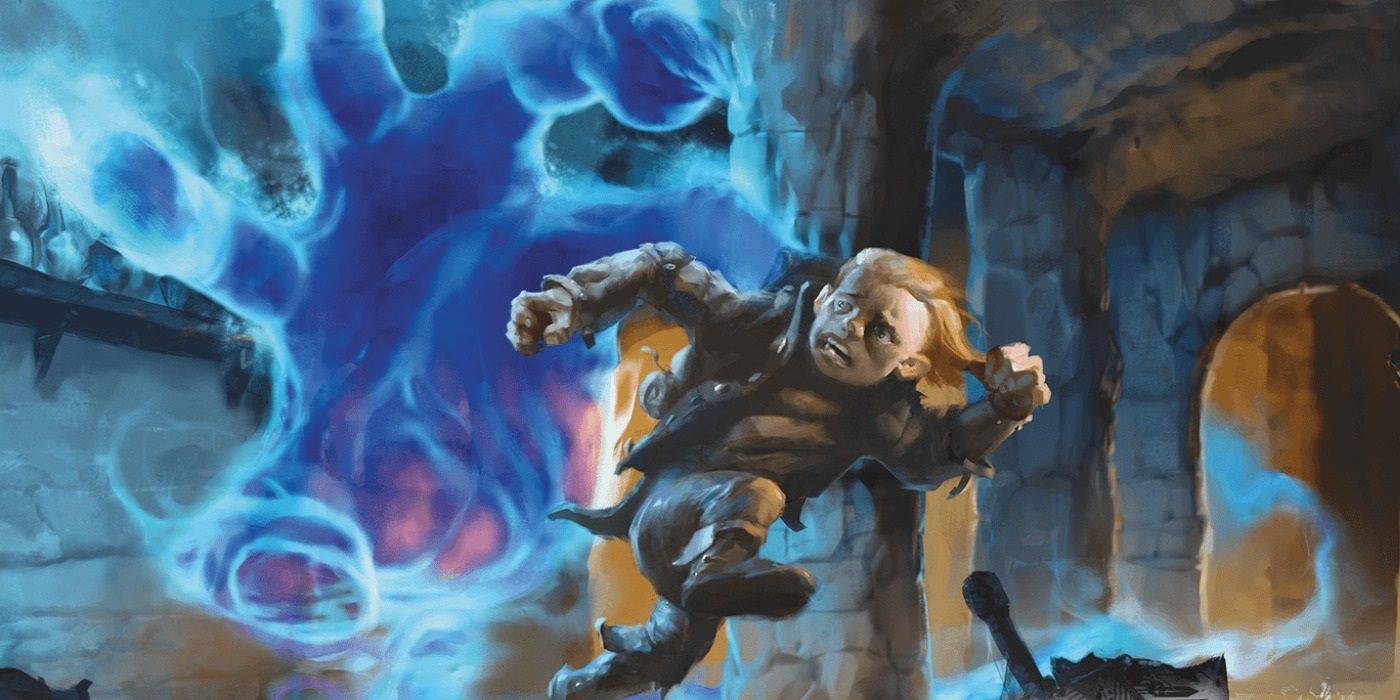Cantrips are the lowest-level spells in Dungeons & Dragons, but although they aren't strong, they can be put to good use by a spellcaster with a good imagination. Spells are some of the most versatile tools in a player's arsenal, letting them inflict all sorts of effects from a distance. With a little thinking, cantrips can be made useful in all sorts of situations.
Spells in Dungeons & Dragons are sorted into levels, with every spellcaster only able to cast a certain amount of spells of a specific level per day. Cantrips are the exception to this rule, usable as often as the player wants. Offensive cantrips, such as Eldritch Blast and Fire Bolt, ensure that their users always have an attack option on hand. While the use of offensive cantrips is obvious, it is the non-damaging cantrips that can encourage players to improvise, letting them experiment with tactics in all sorts of situations. Although some cantrips didn't make it into DnD 5e, those that did can find surprising utility.
Thaumaturgy Can Let D&D Clerics Pretend To Be Poltergeists
Thaumaturgy is a variant of sorts on the well-known spell prestidigitation, which lets players perform a variety of small magical tricks. It is only available to clerics, and has a set of more dramatic effects than what prestidigitation offers. From amplifying the user's voice, to causing flames to flicker, or even slamming open doors, it can be a fun spell to toy with. While not as versatile as prestidigitation, players can still have plenty of fun with thaumaturgy.
The best use for thaumaturgy is intimidation. With the effects of the spell, especially when combined, the user can come off as a force of nature. With just two casts of the spell, the user can give themselves a powerful, booming voice while causing the ground to tremble when they speak. In addition to letting DnD players feel powerful with such an effect, it could give the player a healthy bonus to Intimidation as a reward. Other effects of the spell, such as slamming an open door or creating a mysterious sound, can be used to distract enemies, preferably before starting a fight. Against enemies who are gullible enough, it could grant the party a free surprise round.
Ironically for a spell exclusive to clerics, thaumaturgy has a lot of underhanded uses. It's a spell so well-designed for trickery that it feels like it should belong to a rogue or bard instead. A staunchly honest cleric may question using their powers in such a way, but the spell can be so useful and fun that it can be hard to deny. Thaumaturgy is one of the best spells for a first-level DnD cleric, and can be deviously brilliant in the right circumstances.
D&D's Mage Hand Lets Players Get Creative From A Distance
In Dungeons & Dragons, spellcasting classes rarely want to be anywhere close to danger. Between their usual lack of armor and low hit points, their time is best spent casting spells from a safe distance. Mage hand is a symbolic spell for them, letting them interact with objects from a safe distance. Mage hand does admittedly have its limits, having to stay within 30 feet of the caster and only able to lift up to 10 pounds. Even so, it can be an excellent multipurpose tool for the party.
The most obvious use for mage hand is to pluck items from a distance, such as the user silently stealing a necessary key, or using a tool in a dangerous or inaccessible area, making mage hand useful for a potential new rogue-styled DnD class. Another potential use could be seen in dungeons, provided the party is fairly alert regarding traps. If they encounter a tripwire or other trap trigger, then provided too much force isn't required, mage hand could activate it with the party at a safe distance. It would be a risky maneuver, and it may not work, but it could save the party from a painful penalty.
Mage hand can't attack, and it can only handle light amounts of weight, but it can be the helping hand that a party needs in certain circumstances. As a utility spell, it's a good tool to experiment with to see how many uses can be found for it. Whether it's used for petty thievery or trying to pull off a trick from afar, mage hand rewards diligent users, and can help DnD sorcerers become a great support class.
Minor Illusion In D&D Can Do A Lot With A Small Image
As its name implies, minor illusion is the weakest of all illusion spells in Dungeons & Dragons, and its abilities are rather limited. It can create an image up to five feet by five feet, or a continuous sound, either of which will subsist for one minute. Unfortunately, unlike spells such as thaumaturgy or prestidigitation, it dispels itself if the spell is cast again, so the illusion and sound can't be combined. Although that is disappointing, minor illusion still has its uses.
The use of sound with minor illusion is similar to one of thaumaturgy's uses, the difference being while thaumaturgy creates an immediate sound, one made by minor illusion will linger for a minute. It's a type of minor magic that won't break DnD, but can be helpful regardless. The illusory images, on the other hand, can serve multiple purposes. While an illusory gemstone could momentarily distract a bandit, stealth and traps are more valuable uses. The party could run through a narrow passageway and use minor illusion to disguise their escape with a false wall. Likewise, a five-foot wide hole in the ground could be covered by an illusory floor to trick an enemy into falling into a trap.
Minor illusion's actual ability may be significantly restricted, but it can play many roles in practice. A tool of distraction or deception with infinite uses is always handy to have on an adventure, and players never know when they might need a diversion. All of Dungeons & Dragons' illusion spells can be useful in the right circumstance, and minor illusion is no exception.
Although cantrips are unlikely to be vital to saving the day at the end of a Dungeons & Dragons campaign, they can be incredibly useful in the right hands. They are much like any number of other tools that the party could end up using over the course of their adventure, only in the form of spells. A Dungeons & Dragons party can greatly benefit from clever use of cantrips.
Source: Dungeons & Dragons/YouTube




